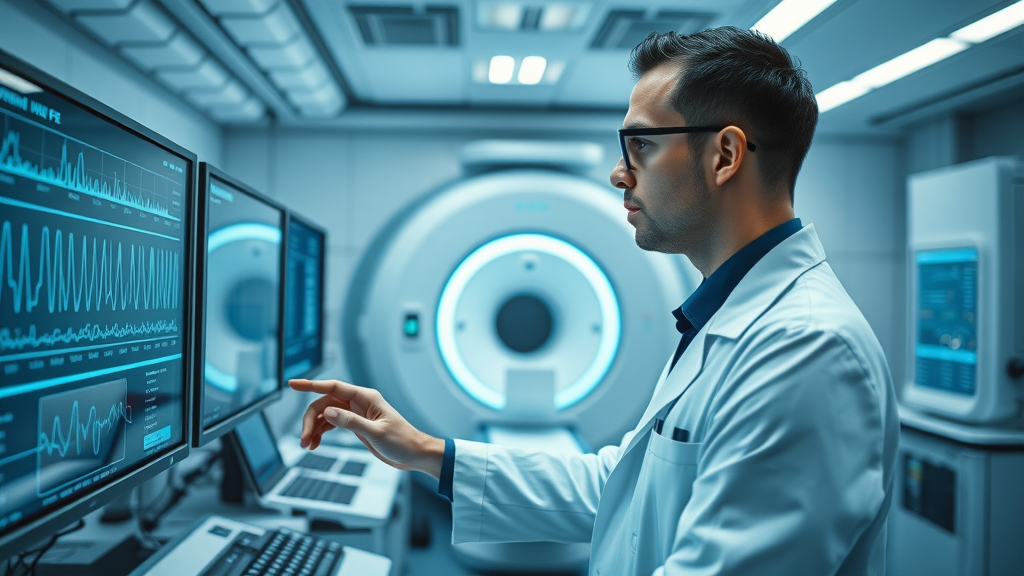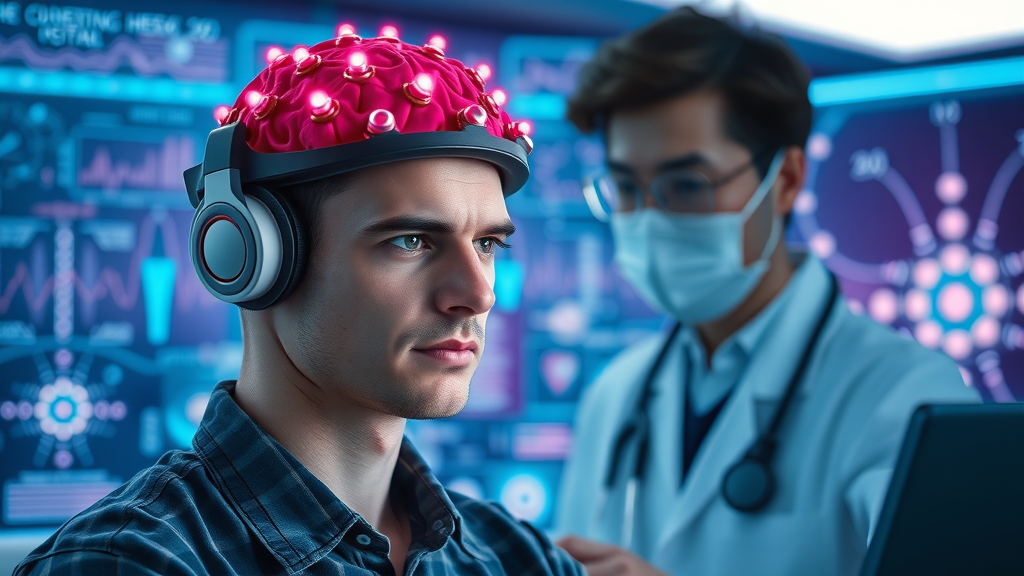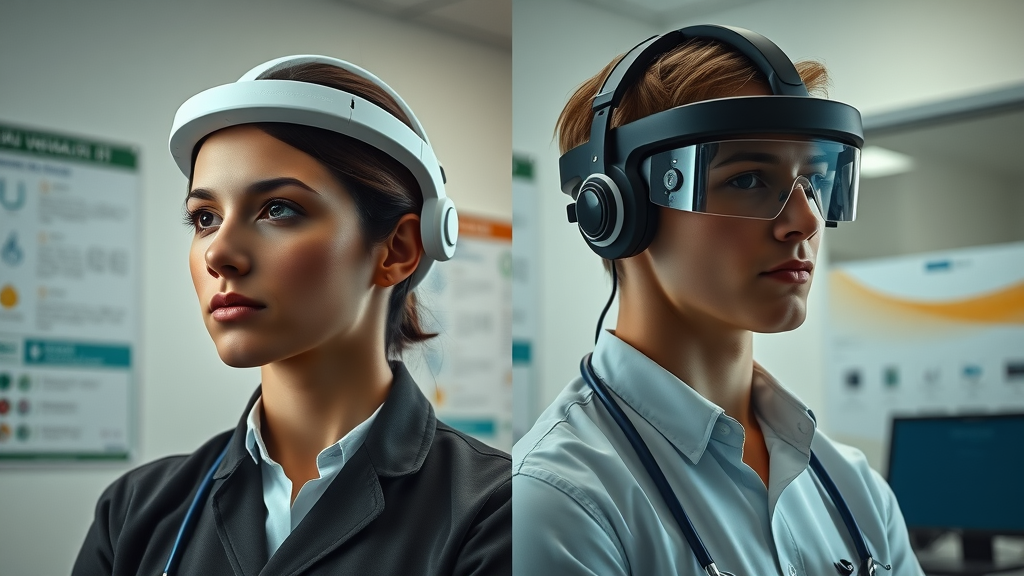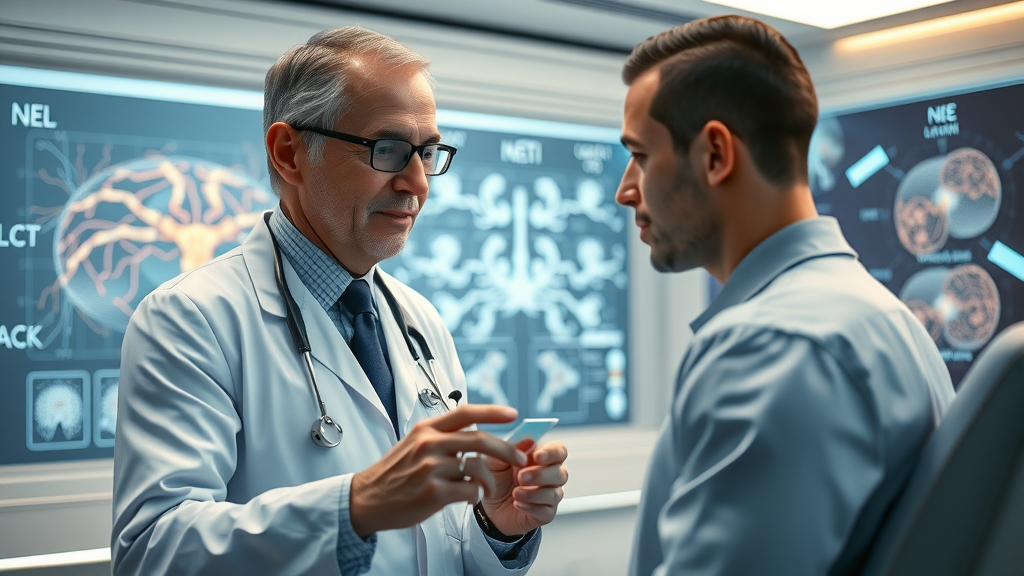Imagine tapping into the deepest realms of your mind—enhancing focus, emotional resilience, and cognitive prowess, all without a single pill. Did you know that over 1.4 million neurofeedback sessions are conducted worldwide each year , helping people unlock new levels of mental health and performance? In this comprehensive guide, you’ll discover how neurofeedback offers a revolutionary, science-backed solution for individuals seeking to transform their brain function and overall wellbeing. Prepare to journey through the technology, research, and real-world successes of neurofeedback—and learn how you can use this advanced brain training to reach your own hidden potential.
"Did you know that over 1.4 million neurofeedback sessions are conducted worldwide each year, helping people unlock new levels of mental health and performance?"

Understanding Neurofeedback: A Revolutionary Approach to Brain Training
Neurofeedback has rapidly emerged as a transformative approach to optimizing brain function and mental health. Unlike traditional therapy methods that focus solely on conversation or medication, neurofeedback harnesses advanced EEG biofeedback technology to provide a window into your own brain activity . By giving real-time feedback through a computer interface , neurofeedback empowers you to directly influence your brain waves , fostering greater self-regulation and unlocking new pathways for growth.
This non-invasive form of feedback training supports both cognitive optimization and emotional resilience. Individuals from all walks of life—students, athletes, professionals—are turning to neurofeedback as a powerful tool for overcoming mental health challenges, managing attention deficit or hyperactivity disorder , and enhancing cognitive function . By targeting specific patterns of electrical activity and guiding the brain toward healthier rhythms, users can experience improvements in focus, mood, and performance. The science behind neurofeedback continues to grow, bringing new hope to those seeking lasting changes in their mental health and daily functioning.
- Advanced EEG neurofeedback technology
- Non-invasive feedback training for cognitive optimization
What is Neurofeedback and How Does It Work?
Neurofeedback, sometimes referred to as EEG biofeedback, utilizes sensitive sensors to monitor brain wave activity—such as alpha waves , beta waves , and slow cortical potentials. These brain waves correspond to different mental states: alpha for relaxation, beta for alertness, and so on. A computer interface processes these signals in real time and translates them into visual or audio cues, enabling the participant to understand and adjust their brain state . Over multiple sessions, through a process called operant conditioning , the brain learns to optimize desired wave patterns, much like how one learns to ride a bike through practice and feedback.
The foundation of neurofeedback training lies in its ability to promote neural plasticity—your brain’s ability to reorganize and improve itself. Each session acts as a micro-workout for your cognitive function . With a reputable practitioner and a clear goal, neurofeedback becomes a safe and empowering alternative or complement to other forms of therapy, medication, or lifestyle change.
How Neurofeedback Improves Mental Health and Brain Function
Neurofeedback offers dramatic potential for improving both mental health and overall brain function . The process is grounded in science, relying on sophisticated EEG technology to decode your unique brainwave patterns and provide targeted biofeedback . By retraining these patterns, neurofeedback can help reduce symptoms associated with chronic stress, anxiety, depression, PTSD, and enhance focus and memory retention.
What sets neurofeedback apart is its principle of self-regulation. Through repeated sessions, individuals gain an elevated command over their brain activity . The brain learns to produce more optimal brain waves , shifting from overactive (beta wave) states related to anxiety to calmer (alpha wave) patterns. This biological shift results in tangible behavioral and emotional improvements, grounded in the brain’s natural power for adaptation and growth.
The Science Behind Neurofeedback Training
At its core, neurofeedback training is a technology-driven form of EEG biofeedback focusing on measurable brainwave activity. Professionals use sensitive electrodes placed on the scalp to capture real-time electrical activity —including alpha waves, beta waves, and slow cortical potentials. These data are analyzed with advanced algorithms to identify patterns associated with specific mental health and cognitive challenges.
Neurofeedback relies on the brain’s plastic nature. By providing instant visual or audio cues (the feedback signal ), the system encourages positive changes in brain state . Over time, repeated feedback training fosters lasting improvements in brainwave organization, supporting not only symptom relief but also boosted performance in areas like memory, focus, and emotional resilience.
- Brainwave patterns and EEG biofeedback
- Neural plasticity and long-term brain function improvement

Evidence-Based Benefits for Mental Health
A growing body of research underscores the efficacy of neurofeedback for a range of mental health challenges. Controlled studies and real-world trials reveal that neurofeedback can significantly reduce symptoms of anxiety, depression, and PTSD . Patients report feeling calmer, less reactive to stress, and better able to manage emotional ups and downs. Neurofeedback’s impact is not just clinical—many participants also notice improved sleep, increased motivation, and a general sense of mental clarity.
For those seeking cognitive enhancement, neurofeedback supports better focus, problem-solving ability, and memory retention. Whether in the classroom, at work, or in competition, optimized brain function translates to real-life success. What’s more, because neurofeedback aligns with the body’s natural learning processes, these gains often last well beyond the conclusion of formal training sessions.
- Reducing symptoms of anxiety, depression, and PTSD
- Improving cognitive focus and memory retention
Exploring Types of Neurofeedback: Which Method Is Best for You?
Neurofeedback is not a one-size-fits-all process. With continuous advances in technology and neuroscience, several variations of neurofeedback training are available—each using different protocols, interfaces, and goals. Understanding which method aligns best with your needs is paramount for achieving lasting success.
The two most common approaches are traditional EEG neurofeedback and computer-based feedback systems. While both utilize precise monitoring of brain activity, traditional systems often use basic waveform tracking, whereas modern approaches employ sophisticated computer interfaces for real-time, adaptive feedback. Emerging innovations are constantly expanding the possibilities for tailored and seamless brain self-regulation.
Introduction to EEG Neurofeedback and EEG Biofeedback
EEG neurofeedback (or EEG biofeedback) forms the foundation of brain training. Here, small scalp electrodes measure the brain’s electrical signals, such as alpha waves and beta waves . By visualizing these signals—often as moving shapes or sounds on a computer display—the user learns to guide their brain state toward more balanced patterns. The process leverages the well-documented concept of operant conditioning : reward appropriate brain wave activity to encourage its recurrence.
Today’s neurofeedback clinics often provide a choice between classic methods and software-driven sessions. Some systems integrate game-like feedback or interactive visuals tailored to each user’s goals. Best results stem from a thoughtful selection of protocol, careful assessment of individual needs, and consistent engagement over time.
- Comparing traditional EEG neurofeedback with neurofeedback training using computer interface

Other Feedback Training Technologies
Beyond EEG, additional feedback technologies are making waves in brain optimization. Real-time feedback mechanisms—ranging from computer interfaces to wearable devices—are now widely adopted for their user-friendliness and enhanced user engagement. These platforms often present colorful graphics or immersive audio cues, which adapt instantly to fluctuations in your brain waves .
Such systems encourage even greater control over self-regulation. As the individual learns to consciously shift brain activity in response to visual or sound cues, the feedback loop is strengthened. Computer-based neurofeedback is especially appealing for its accuracy, interactive experience, and scalability for both clinic and at-home use.
- Real-time feedback mechanisms
- Role of computer interfaces in brain self-regulation
| Treatment Type | Session Duration | Technology | Target Outcomes |
|---|---|---|---|
| Classic EEG Neurofeedback | 30–60 minutes | EEG cap/electrodes, computer display | ADHD, anxiety, cognitive performance |
| Computer Interface-Based | 20–45 minutes | Modern wearable EEG, interactive software | Mood regulation, focus, peak performance |
| Wearable Home Devices | 15–30 minutes | Wireless sensors, smartphone app | Mindfulness, stress reduction |
Who Can Benefit from Neurofeedback? Target Groups and Applications
Neurofeedback is a versatile intervention with proven benefits across a variety of populations and challenges. From children with attention deficit hyperactivity disorder (ADHD) to adults seeking greater focus, from those battling anxiety and depression to elite performers aiming for cognitive edge, the reach of neurofeedback is expansive. Let’s look at some of the groups who stand to gain the most.
Attention Deficit and Hyperactivity Disorder (ADHD)
One of the most compelling applications of neurofeedback is in the management of attention deficit and hyperactivity disorder . Neurofeedback for ADHD typically targets the desynchronization of beta and theta waves—patterns associated with attention lapses and impulsivity. Studies demonstrate significant improvements in focus, impulse control, and academic performance following a course of neurofeedback training in children and adults with ADHD.
By teaching individuals to self-regulate problematic brainwave patterns , this non-pharmacological approach offers a promising alternative or adjunct to medication. Consistent feedback training sessions support meaningful, long-term improvements in academic, occupational, and social settings.
- Neurofeedback for ADHD and attention deficit improvements
Treatment of Anxiety, Depression, and Other Mental Health Challenges
Neurofeedback shines as a powerful ally in the treatment of anxiety, depression, and related mental health concerns. By promoting more balanced brain activity —calming excessive beta waves, enhancing soothing alpha wave activity—it addresses the biological roots of emotional volatility. The result: enhanced stress tolerance, emotional regulation, and fewer mood swings.
Individuals in clinical settings often report a significant reduction in anxiety and depressive symptoms after completing a structured neurofeedback program. These gains are supported by robust clinical research demonstrating neurofeedback’s therapeutic potential, especially for those who have not responded to conventional treatments.

- Neurofeedback treatment for stress and emotional regulation
Peak Performance Enhancement
Peak performers—from athletes to entrepreneurs—utilize neurofeedback as a secret weapon for optimizing brain function . Training the brain for greater emotional control, sharper focus, and optimal cognitive readiness can make the difference between average and exceptional achievement. Neurofeedback has been embraced by Olympic athletes, chess grandmasters, and Fortune 500 executives alike to refine their decision-making, creativity, and composure under pressure.
Countless real-world examples showcase neurofeedback’s reach: artists overcoming creative blocks, students boosting memory for exams, and professionals enhancing productive output. By optimizing cortical potential , users can consistently access their most resourceful mental states—on demand.
- Brain function optimization for athletes, students, and executives
- Real-world examples: Artists and professionals using neurofeedback training
Neurofeedback Training: What the Process Looks Like
If you’re considering neurofeedback, you’re likely wondering what a typical experience looks like from start to finish. The process emphasizes customization—aligning technology and protocol with your unique goals and neurobiology for maximum effect.
Assessment and Customization
Your neurofeedback journey begins with a comprehensive assessment called brain mapping or a quantitative EEG (qEEG). During this session, a clinician records a baseline of your brainwave patterns using sensitive EEG sensors, creating a detailed map of your brain activity . This blueprint allows for the design of a highly individualized neurofeedback protocol—targeting the specific cognitive function and mental health outcomes you seek.
Customization is essential. Not all brains work the same, nor do they require the same approach. Working with a certified practitioner ensures that your feedback training is tailored, safe, and based on the very latest clinical science.
- Personalized neurofeedback protocols using brain mapping
- Feedback training tailored to individual brain function

Typical Neurofeedback Session Explained
A standard neurofeedback session lasts 30–60 minutes in a comfortable, relaxed environment. After connecting non-invasive sensors, you simply sit and watch as the computer interface displays feedback signals—such as a changing video or tone—based on your moment-to-moment brain wave activity. The goal is to maintain or shift your brain state to the “rewarded” zone, as determined by your treatment plan.
During training, the process is comfortable and entirely painless—no electrical stimulation is applied. Most provider recommend attending regular sessions, often 2–3 times per week for several months, to maximize positive changes. Clients report sessions becoming more engaging and effective as their ability to influence their brain state improves.
- Step-by-step description of a session using computer interface
- What to expect: session time, comfort, and frequency
The Evidence: Clinical Research and Outcomes of Neurofeedback Treatment
Scientific research underpins the growing popularity of neurofeedback treatment . Multiple peer-reviewed studies, including meta-analyses and randomized controlled trials, have demonstrated measurable improvements in ADHD, anxiety, depression, and peak cognitive performance. These outcomes reflect not only short-term gains after feedback training, but also lasting benefits that outlast the training period.
Overview of Major Studies on Neurofeedback Training
Clinical trials on neurofeedback training include both children and adults, with particularly strong evidence for those suffering from deficit hyperactivity disorder and anxiety. Researchers have used outcome measures like the Conners’ Rating Scales for ADHD, Beck Depression Inventory, and standardized cognitive testing to objectively track improvements.
| Application | Outcome Measures | Population Studied |
|---|---|---|
| ADHD / Attention Deficit | Conners’ Scales, qEEG, Behavioral Reports | Children (ages 6–17), Adults |
| Anxiety & Depression | Beck Depression Inventory, EEG, Psychometric Testing | Teens, Young Adults, General Population |
| Autism Spectrum Disorders | Social Responsiveness, EEG Mapping, Parent Reports | Children, Adolescents |
| Peak Performance | Focus Tests, Sports Scores, Cognitive Performance | Athletes, Students, Executives |
Key Findings and Expert Opinions
Results from the scientific community are promising. Controlled studies report that consistent neurofeedback training provides improvements that rival—and sometimes surpass—those of medication for ADHD and anxiety. Many clinicians consider neurofeedback a safe, well-tolerated, and robust intervention, either as a standalone or as part of a holistic mental health plan.
Expert perspectives highlight the importance of individualized approaches. According to leading researchers, meta-analyses show sustained benefits over time, particularly when neurofeedback is integrated with supportive therapies and lifestyle improvements. Importantly, neurofeedback is generally recognized as safe, with mild side effects rarely reported.
"Neurofeedback has demonstrated efficacy in helping individuals with ADHD and anxiety achieve significant improvements," says Dr. Lisa Chen, clinical neuroscientist.
- Meta-analyses and long-term results for neurofeedback
- Perspectives from mental health professionals

Risks and Considerations: Is Neurofeedback Right for You?
While neurofeedback is well-tolerated and safe for most people, it’s important to be aware of potential risks and considerations before starting your journey.
Potential Downsides and Side Effects
For some participants, neurofeedback may induce mild side effects such as headaches, temporary fatigue, or increased emotional sensitivity—especially early in the feedback training process. Additionally, progress may feel slow for those who expect instant transformation, leading to frustration if goals are not realized as quickly as hoped. Success depends greatly on individual brain chemistry, persistence, and the fit of the neurofeedback protocol.
A thorough evaluation by a qualified practitioner is crucial to determine if you’re a good candidate for brain training. Individuals with certain neurological or psychiatric conditions may require special oversight before embarking on this therapeutic path.
- Mild side effects: headache, fatigue, emotional sensitivity
- Evaluating if you are a good candidate for neurofeedback
Safety, Regulations, and FDA Status
The field of neurofeedback is evolving, but professional oversight remains a priority. Licensed clinicians and therapists must adhere to high standards governed by professional and scientific organizations. In terms of FDA regulation, specific EEG biofeedback devices are cleared for indications like relaxation training. However, their use in treating mental health disorders is usually considered “off-label” and should be discussed with your provider. The presence of experienced practitioners helps ensure all sessions are safe and effective.
- Clinical oversight and professional standards in neurofeedback treatment
Navigating Neurofeedback Treatment: Choosing Providers and Getting Started
Choosing a provider is a key decision in your neurofeedback journey. With the right guidance, you can maximize results while minimizing risks.
Selecting Qualified Practitioners
Look for clinicians certified by reputable professional organizations such as the Biofeedback Certification International Alliance (BCIA) or the International Society for Neurofeedback and Research (ISNR). Assess their experience treating cases similar to yours and confirm active oversight of all sessions. High-quality providers offer in-depth assessments, discuss both benefits and limitations, and actively tailor treatment as you progress.
- What to look for: credentials, experience, and professional organizations
Is Neurofeedback Covered by Insurance?
Payment and insurance coverage remain common concerns. Neurofeedback is rarely covered comprehensively by standard plans, but some insurers offer partial reimbursement—especially when the need for clinical intervention is documented. Always verify with your provider and insurer in advance. Many clinics offer flexible payment plans to make regular feedback training accessible.
- Exploring payment options and reimbursement for neurofeedback training
Preparing for Your First Session
Preparation can go a long way toward ensuring a smooth start with neurofeedback. Complete all intake assessments, wear comfortable clothing, and be ready to discuss your mental health history and goals in detail. Ask your provider about any lifestyle recommendations before your first appointment—hydration, diet, or sleep. Maintaining realistic expectations and a commitment to consistent attendance is key.
- Steps to take before beginning neurofeedback

Technology Behind Neurofeedback: Exploring Advances in Computer Interfaces
Modern neurofeedback owes much of its efficacy to cloud-based, AI-driven, and real-time computer interface technology. These advances have made neurofeedback more precise, personalized, and accessible both in clinics and at home.
How Computer Interfaces Power Neurofeedback Training
The heart of computerized neurofeedback lies in real-time EEG readings processed by advanced feedback algorithms. As the system interprets your brain wave activity, it instantly delivers adaptive cues through visual or auditory channels. These cues reward ideal brain states —promoting learning through repetition and engagement. Computer interfaces support both clinical customization and at-home follow-up, boosting compliance and long-term gains.
- Real-time EEG readings and adaptive feedback systems

Future Trends in Neurofeedback Technology
The future of neurofeedback is bright—combining data science, wearable technology, and artificial intelligence for unmatched personalization. Home-use devices now allow clients to practice feedback training between clinical visits, and new AI-driven systems are enabling real-time, on-demand adjustments based on ongoing brain mapping. These innovations point toward a world where mental health optimization becomes a daily, self-directed practice.
Emerging applications include integration with digital wellness, biohacking communities, and preventive care programs. As devices become more intuitive and data-rich, expect neurofeedback to play a pivotal role in the management of cognitive health for families worldwide.
- Emerging applications, home devices, and AI-driven neurofeedback treatment
Featured Stories: Real-Life Neurofeedback Successes
The most compelling evidence for neurofeedback’s potential takes shape in real-life transformation stories: individuals reclaiming calm, focus, and confidence through structured feedback training programs.
From Struggle to Success: Neurofeedback in Mental Health Recovery
Case studies abound of young students with ADHD discovering new focus in school, anxious adults regaining composure in stressful environments, and performers using neurofeedback as their secret weapon for peak cognitive readiness. For example, a 12-year-old with attention deficit saw marked improvements in school performance after three months of tailored feedback training . In another case, an executive overcame chronic stress and insomnia using neurofeedback, reporting a renewed sense of clarity and productivity.
These stories are echoed by both practitioners and clients—demonstrating that, with the right protocol and commitment, neurofeedback training can be life-changing for virtually any cognitive or emotional challenge.
- Case studies: ADHD, anxiety, and peak performance

"Before neurofeedback, I was constantly distracted and anxious. After 3 months, I feel more focused and calm than ever before." – Emily R., patient
People Also Ask: Neurofeedback FAQs
What does neurofeedback therapy do?
- Neurofeedback therapy provides real-time feedback through a computer interface to help recalibrate brain activity and promote healthier mental health patterns. It trains the brain to produce more optimal brain wave activity, resulting in improved focus, better emotional regulation, and reduced stress and anxiety—helping you develop new patterns of resilience and performance.
What is the downside of neurofeedback?
- Some users experience mild side effects such as headache, fatigue, or frustration if goals are not realized quickly. Effectiveness can also vary by individual, and consistent attendance is important for long-term change. A thorough assessment before starting is essential to determine if neurofeedback is right for you.
Will insurance cover neurofeedback?
- Insurance coverage for neurofeedback training varies. Some plans may offer partial reimbursement if there is documented clinical need, but most providers recommend checking eligibility and exploring all payment options in advance with your insurer.
Is neurofeedback approved by the FDA?
- The FDA has cleared certain EEG biofeedback devices for relaxation training, but neurofeedback for mental health disorders is typically “off-label.” Always consult with a qualified practitioner about device clearance and best practices for your condition.
Step-by-Step Guide: How to Start Neurofeedback Training

- Research and choose a reputable neurofeedback provider
- Schedule an assessment to map your brain activity
- Collaborate on a tailored neurofeedback treatment plan
- Attend regular feedback training sessions
- Track improvements in mental health and brain function
- Tips for maximizing outcomes: self-care, consistency, realistic expectations
Common Questions About Neurofeedback Treatment

- How many sessions are needed for results? Results may be observed after 10–20 neurofeedback training sessions, though individual experiences vary. Consistency is key for lasting improvements.
- Is neurofeedback safe for children or elderly? Neurofeedback is typically safe for most age groups but should be monitored by a specialist, especially for children or older adults with complex health needs.
- Are home neurofeedback devices effective? At-home devices offer convenience and ongoing support but are generally best used as adjuncts to clinic-based guidance. Their effectiveness depends on user commitment and proper oversight.
- What are the alternatives to neurofeedback treatment? Alternatives include medication, cognitive-behavioral therapy, and lifestyle changes such as exercise, mindfulness, and improved sleep hygiene. The best approach may integrate several of these options.
How Neurofeedback Will Shape the Future of Mental Health
As awareness and access to neurofeedback continue to grow, experts predict it will play a foundational role in the future of mental health care—providing a non-invasive, empowering tool for lifelong brain health.
Neurofeedback as a Core Component in Holistic Brain Health
Biohacking enthusiasts, digital wellness advocates, and progressive clinics are already integrating neurofeedback with broader preventive mental health programs. By combining self-directed feedback training with meditation, diet, exercise, and digital monitoring, new possibilities emerge for true mind-body optimization and resilience.
- Integration with biohacking, digital wellness, and preventive mental health programs
Prospects for Personalized Brain Training Programs
The next wave of neurofeedback will likely feature advanced AI, wearable computer interfaces , and on-demand treatment—tailoring each session to your current brain state, needs, and schedule. This shift promises unprecedented accessibility and sustainability, making brain training an integral part of school, workplace, and home wellness routines worldwide.
- Artificial intelligence, wearable computer interface, and on-demand neurofeedback treatment
Ready to Experience Neurofeedback? Take Action Today
"Unlock your brain’s hidden potential—neurofeedback can help you become the best version of yourself."
- Take the First Step Toward a Calmer Brain - www.allaboutneurofeedback.com/find-a-provider
What You'll Learn from This Guide
- The science and technology powering neurofeedback training
- How neurofeedback benefits mental health, cognitive function, and emotional regulation
- Who benefits from neurofeedback, and what the process entails
- Latest research, real-life stories, and a practical starting guide
- Tips for maximizing outcomes and staying on track with feedback training
Conclusion
Begin your neurofeedback journey by choosing a certified practitioner, preparing for a tailored assessment, and committing to regular sessions. Take action today—experience the transformation of your mind, mental health, and life.
Sources
- https://www.ncbi.nlm.nih.gov/pmc/articles/PMC4321063/ – Neurofeedback: A Comprehensive Review on System Design, Methodology and Clinical Applications
- https://www.isnr.org/ – International Society for Neurofeedback & Research
- https://www.frontiersin.org/articles/10.3389/fnhum.2016.00339/full – Frontiers in Human Neuroscience
- https://www.psychologytoday.com/us/basics/neurofeedback – Psychology Today: Neurofeedback
- https://www.bcia.org/ – Biofeedback Certification International Alliance
Neurofeedback is a non-invasive therapy that trains individuals to regulate their brain activity, potentially improving mental health and cognitive performance. For a comprehensive understanding of this technique, consider exploring the article “ Neurofeedback ” on Psychology Today, which delves into its applications, effectiveness, and considerations. Additionally, the National Alliance on Mental Illness offers insights in “ Neurofeedback: A Complement to Talk Therapy and Medication ,” discussing how neurofeedback can complement traditional treatments. If you’re serious about enhancing your mental well-being, these resources will provide valuable information on integrating neurofeedback into your therapeutic journey.
 Add Row
Add Row  Add
Add 



Write A Comment